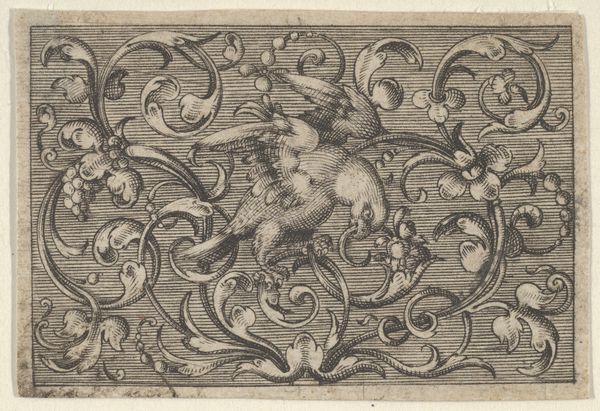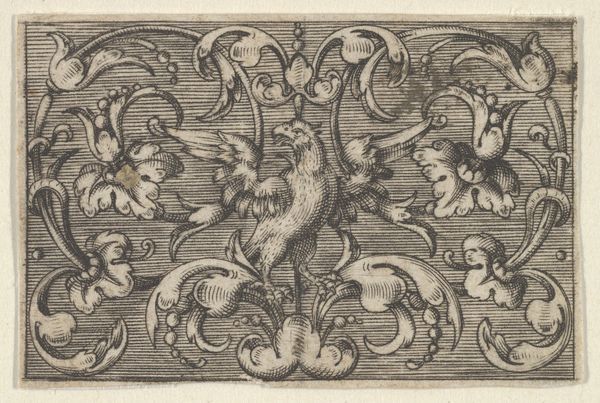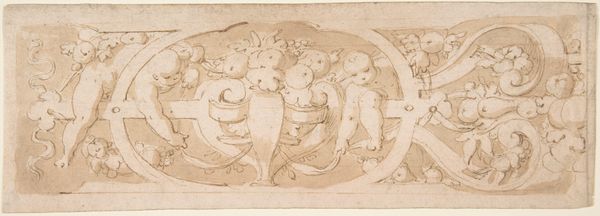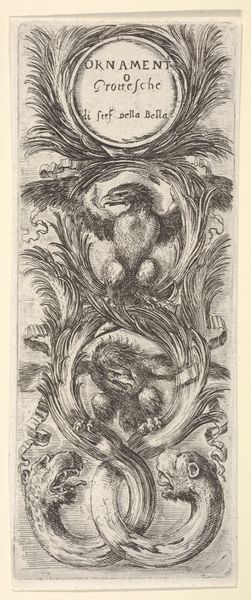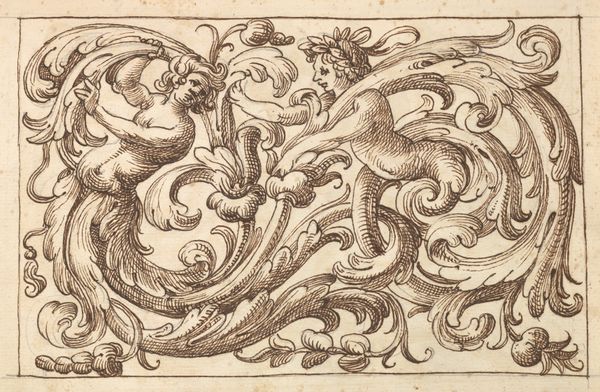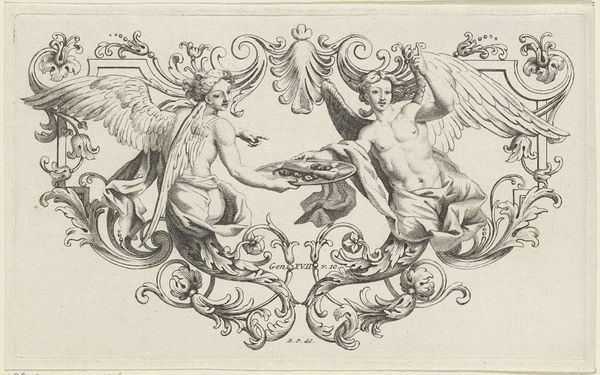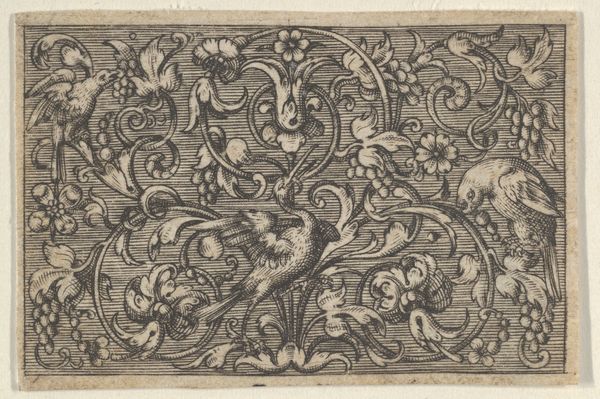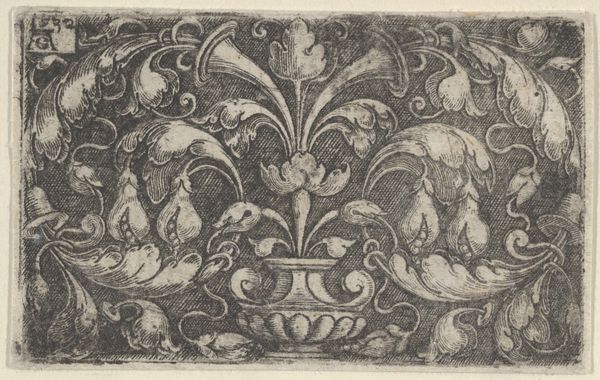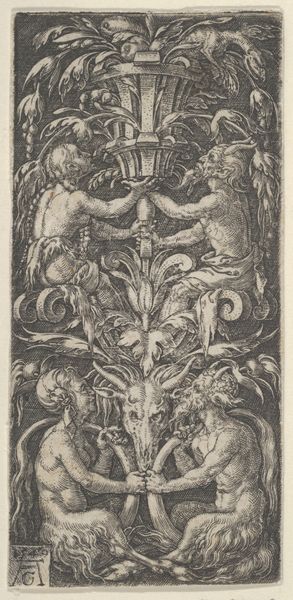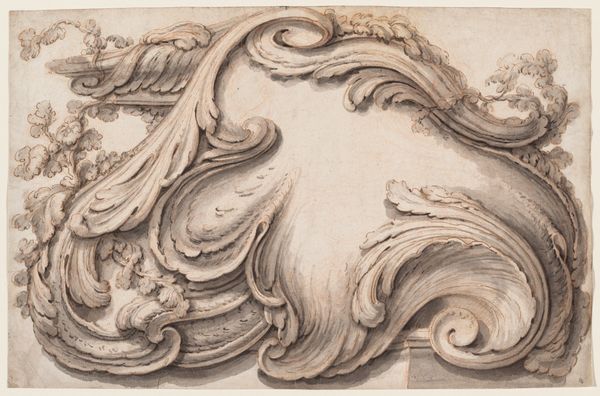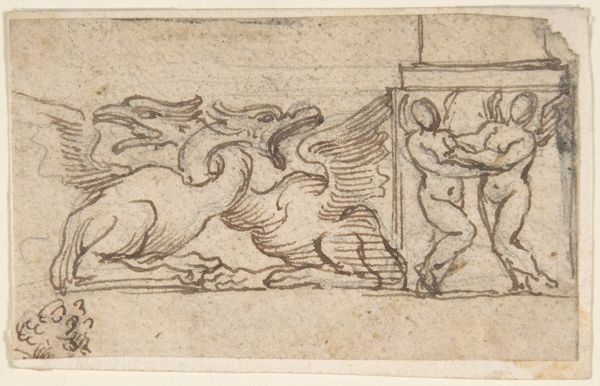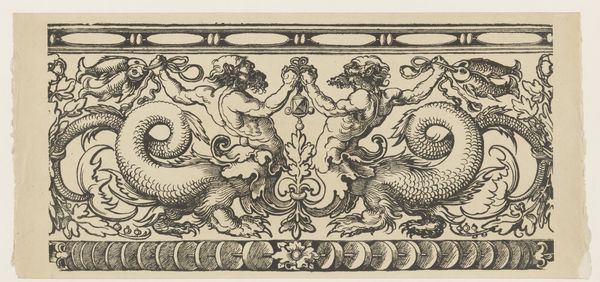
drawing, print, charcoal, pastel
#
drawing
#
allegory
#
baroque
# print
#
charcoal drawing
#
form
#
coloured pencil
#
line
#
charcoal
#
pastel
Dimensions: 2 1/4 x 6 7/16 in. (5.7 x 16.4 cm)
Copyright: Public Domain
Curator: Before us is "Design for a Frieze with Two Griffins," an anonymous artwork created sometime between 1650 and 1700, rendered in charcoal and pastel. Editor: It strikes me as simultaneously decorative and unsettling. The muted colors lend it an antique feel, yet those fierce griffins... they promise a darker narrative, no? Curator: Observe how the symmetrical composition underscores a formal balance. The mirroring griffins, the elaborate swirling acanthus leaves—each element contributes to an overall sense of harmonious design. It’s line and form prioritized above all. Editor: And those griffins themselves—potent symbols often used by powerful elites throughout history. Are they guarding something? Are they symbols of aggression or protection? Who commissioned this design and for what purpose? To evoke the glory of empires past? The style certainly recalls Baroque monumentality. Curator: Indeed, the Baroque influence is undeniable. The dynamic tension in the lines, the dramatic interplay of light and shadow—it all speaks to that era's aesthetic sensibilities. But look closer at how the charcoal rendering delineates texture, adding depth despite the limited color palette. The draftsmanship itself commands attention. Editor: Yet we cannot divorce it from its sociopolitical moment. This era saw a surge in decorative arts that reinforced power structures. Aristocrats embellished their surroundings, employing artists to communicate wealth, lineage and often the ruthless assertion of dominance. Do we see in these griffins a visual metaphor for those claiming power? Curator: A plausible interpretation, certainly. Though from a purely formal perspective, consider how the line functions as both boundary and embellishment. It defines the creatures, yet also enhances the overall ornamental quality. The line operates on dual semiotic registers. Editor: Semiotics of domination perhaps. Understanding this artwork demands a thorough historical contextualization so as not to admire aesthetics divorced from the often ugly realities behind aristocratic consumption and display. Curator: Perhaps. Still, one cannot deny the artist's mastery of materials and composition. A feat that merits acknowledgement even centuries later. Editor: Yes, and interrogating that feat is the true ethical labor when interpreting such historical works today.
Comments
No comments
Be the first to comment and join the conversation on the ultimate creative platform.
